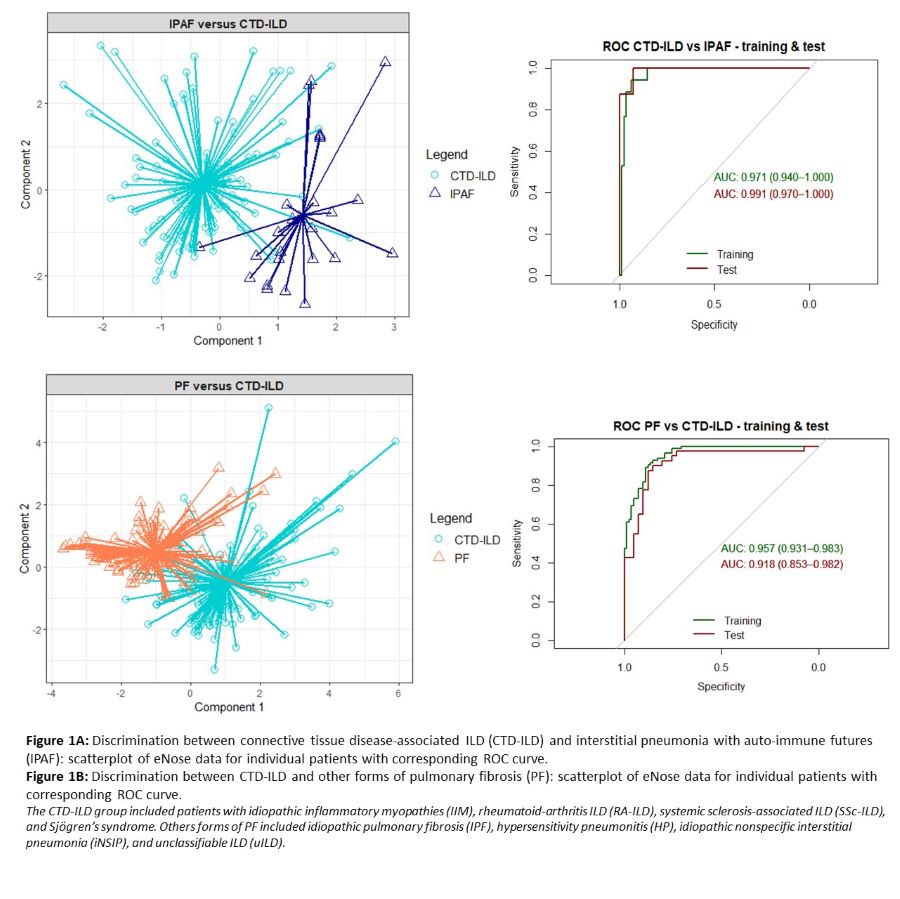Abstract
Background
Previously, we showed the potential of exhaled breath analysis using electronic nose (eNose) technology to detect interstitial lung disease (ILD). Here, we evaluated whether an eNose can discriminate connective tissue disease-associated ILD (CTD-ILD) from interstitial pneumonia with auto-immune features (IPAF) and other forms of pulmonary fibrosis (PF).
Methods
Exhaled breath data (breathprints) of outpatients with CTD-ILD, IPAF, and other forms of PF were collected using an eNose (SpiroNose). Data were analyzed using partial least squares-discriminant and ROC analysis in a training and test set (2:1).
Results
We included 123 patients with CTD-ILD (35 IIM/27 RA-ILD/45 SSc-ILD/16 Sjögren), 25 with IPAF, and 122 with PF (83 IPF/25 HP/10 iNSIP/4 uILD). eNose sensors discriminated between CTD-ILD and IPAF (AUC 0.99, 95%CI 0.97-1.00 in the test set), and between CTD-ILD and PF (AUC 0.92, 95%CI 0.85-0.98 in the test set) with high specificity, sensitivity and accuracy (Figure 1). Within the CTD-ILDs there were no distinctive differences (AUC of IIM vs others 0.63, RA vs others 0.54, Sjögren vs others 0.77, SSc vs others 0.49).
Conclusions
eNose technology accurately separates CTD-ILD from other forms of PF, and IPAF in particular, whereas patients with different CTD-ILDs have a relatively similar breathprint. Further studies should focus on the potential of eNose technology as biomarker of lung involvement in CTD.
